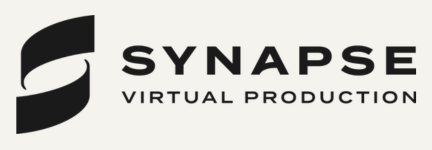
Should ProdCos Be Paid to Pitch? Treatment Fees and Single-Bids Could Be Double-Edged Swords

While production companies face pitch strain, production and agency leaders warn possible solutions could create new problems. Treatment fees could alleviate some concerns, but eat into already shrinking production budgets, and ditching a three-way pitch for a single-bid can be a “low-budget tactic”.
The cost of pitching, agency transparency, and director burnout have brought pitch resourcing into the spotlight, with production leaders frustrated by what they see as the diminishing feasibility of pitches.
“The problem we often face is that the budgets we are presented with are often unrealistic and we need to assess those that are likely to be massaged into a real place and those that truly waste everyone's time -- agency and client included -- from the outset,” owner and MD of Revolver, Michael Ritchie, tells LBB.
Despite a prodco’s greatest efforts, no matter how much it plans, “a treatment due on the Monday means weekend work.”
“We never stop making the treatment better until it's actually submitted,” Michael adds.
Three-Way Pitch Model Exists “For a Damned Good Reason”
While Revolver’s Michael feels “remuneration for pitches would be a respectful place to start,” he emphasises that, despite some shortcomings, the three-way pitch process works. While production execs across Australia and New Zealand have expressed frustrations with the model, Michael says, ““I truly feel we need to celebrate the three-director pitch model. It's been around for a long time for a damned good reason.
“What we have to understand is the three-bid system, albeit hard, is what really lifts the quality of the work. It works for the agency creatives and the clients, so it has to work for us.
“We all compete and we all want to win a job and [this hones] our approach… the work wins.”
For agencies, the value of a three-way pitch process is the client feels assured they are choosing the right concept and getting value for money. Rick Barry chief creative officer, Alex Derwin, tells LBB it raises everyone’s game.
“If you're pitching production companies against each other, they're all going to make sure they're trying to deliver value for money,” the independent agency co-founder, and ex-BMF CCO, says.
“You want to make sure clients are getting what they paid for.”
A creative seeing their work brought to life by multiple directors is appealing, he adds, but it is ultimately an account management process.
“They’re working on behalf of their clients to drive value and options from a production company. It shows the client’s due diligence -- you've gone out and looked around and you've given quality and value for your client.”
When agencies view prodcos as service providers, it follows that agencies act on behalf of clients. Now, running an independent, Alex tries to avoid this workflow by incorporating directors into the process earlier, skipping most of the bidding process.
Havas Host executive creative director Sebastian Vizor tells LBB once producers and creatives agree on the directors they’d like to treat the brief, agencies will often initiate a triple-bid.
“We’re generally contractually obligated to seek three responses,” he explains, “whether that's full treatments or simply budgets and initial approaches.
“That said, we try to make a judgment call based on the size of the opportunity. If the budget falls below a certain threshold, we typically wouldn't take the project out to a full pitch.”
But Michael notes single-bids can be an excuse for agencies to push for a lower production budget.
“[The single-bid] was at one time reserved for when the agency and client had a particular project that worked for a very specific -- and often highly sought after -- director to secure their availability.
“However, it is now often being used as a way to try to push a lower-than-feasible production budget through the pitch process. While we appreciate the intent here, and if it's genuine, it's respectful and great … it's important that it's not used as a low-budget tactic.
“It often becomes more onerous for the director as they don't have a mandate from the treatment process.”
Leo Australia ECD Hilary Badger agrees pitch resourcing is a growing problem, but notes overhauling the three-way pitch model would require widespread buy-in.
“I think this is extremely tough for production companies, as they use so much resource pitching for work with slim hope of ever being paid for it,” she says.
“I never ask someone to pitch for something they don’t have a chance of winning, always give everyone equal information and make myself available for questions and check-ins during the pitch process.
“Some client/agency relationships have recalibrated to avoid the triple-bid, and you can see how the work benefits from that. But changing the triple-bid system is a huge industry overhaul that everyone involved would have to buy into.”
Treatment Fees Can Lead to Steeper Expectations
Michael points out that in some European markets, clients help cover pitch costs with a treatment fee, in what constitutes ”recent and considerable headway.”
“What it does is not only fiscally assists the director and the production company, it importantly has the client and agency place a far greater value on the work presented in the treatment.”
While these clients may not pay the full cost of the pitch, the “transaction derives respectful and meaningful engagement”.
“[It keeps] the independent ecosystem in a more sustainable position, which is good for everyone,” Michael says.
However, Revolver has observed, “the expectations of revisions and control over the pitches increases because of the financial exchange.
“Could the process lose a bit of objectivity and be more burdensome with payment? I hope not.”
For Sebastian, the issue is, unfortunately, not this simple, as the money to cover a treatment fee has to come from somewhere.
“With production budgets shrinking, the funding has to come from somewhere, and, more often than not, it ends up coming out of the production budget itself, ultimately leaving less money to bring the creative vision to life,” he says.
“One of our biggest frustrations is ensuring everyone works within the agreed budget. We aim to carve out the maximum amount possible upfront, as that sets the stage for the best outcome.”
Special Australia’s national head of production, Tash Johnson, says the industry needs to acknowledge production partners’ time and financial investment production when pitching.
Special has “introduced treatment fees in cases where timelines or scopes shift dramatically, resulting in a director no longer being able to work on the project or if the job is cancelled altogether,” she explains.
“We’ve adjusted scope or scripts before briefing to avoid wasting everyone’s time. But we have also had situations where the pitch was cancelled after briefing due to changes in budget or direction. Unfortunately, this is happening more frequently. In those cases, we’ve aimed to pay a treatment fee to acknowledge the time and effort already spent.”
FCB Aotearoa executive producer Sally Lankshear adds while there are no obligations to pay treatment fees, the practice is not unheard of in instances of a cancelled production.
“It's really dependent on how much work has gone into that pitch and at what time it's been cancelled in the process,” she says. “It’s probably quite rare that it would happen.”
The EP notes the way the entire treatment process is handled comes down to the agency producer.
“[It’s our] job to make sure we have a solid brief that goes to the production company, that the client and the team are ready to pitch,” she continues.
“I like to be really transparent with all production companies -- everyone gets the same information, because you need to make that pitch process really, really fair.
“For the really big jobs… it is labour intensive for the production company because you're doing multiple quotes and to shoot in different countries.”
More honest, industry-wide discussion around the true costs of pitching is needed, Tash says, particularly in an environment of tighter schedules and shrinking budgets.
“We need systems that respect production partners’ investment while still serving agency and client needs.
“We need to ensure we’re only briefing production partners when the job is approved to proceed by all parties. And when things fall through, we should do right by them and compensate for the time and investment already made.”
Pitch Problems Compound for Animation Studios
The resourcing problem is compounded for animation studios, for whom pitching costs tend to be more onerous.
Graham Pryor, executive producer at Robot Fights Monster, says animation pitching, though a similar overall process to live-action, requires studios to demonstrate a near-finalised concept to win over uncertain decision-makers.
After determining internally how to invest in a pitch, studios identify key elements to highlight -- such as character design, world-building, or narrative style -- and allocate resources accordingly. Directors lead the creative vision, while specialised artists like character designers, and storyboarders are brought in as needed.
“The goal is to produce original artwork, style frames, or storyboards that convincingly portray the final product, often within a tight deadline,” Graham explains.
“It's important to us to find out how many companies are on the pitch. We make an estimate based on that … because we don't want to spend too much.
“We find there's a lot more hard costs involved in investment, plus there's a lot more expectation … and it’s not always explicit, of creating original artwork, ideas, style, frames, designs, storyboards, all of this sort of thing.”
The size of a pitch matters for a number of reasons. A smaller project doesn’t necessarily mean a less-onerous pitch process. FCB’s Sally notes small jobs can be difficult to pitch for different reasons.
“It’s a lot harder to come up with creative solutions that work for [smaller] budgets,” she says.
“I don't really have an opinion yet on what jobs should be compensated… [but] I do think it needs to be a lot more fair in terms of the amount of directors you have on a pitch.”
For a cancelled or changed brief, she stresses everyone should be compensated.
“And that's at the very least, right? At the very least, that should be happening.”















